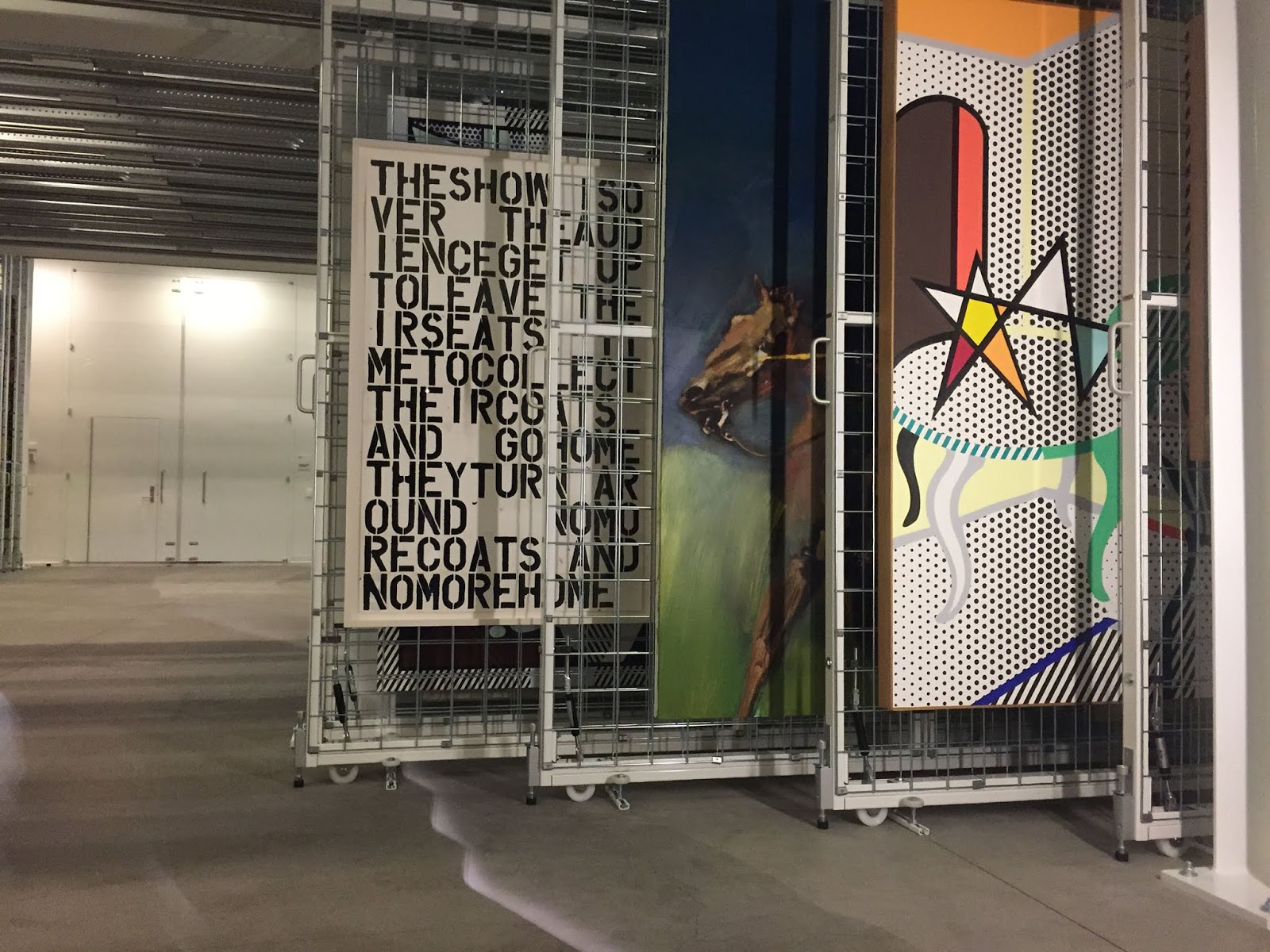Broad Has 93% of its Collection in Storage (and That's OK)
 |
| The Broad's collection storage "Vault" |
A routine feature of such articles is a quote from Eli Broad, who has become the Marie Kondo of museum storage. Broad seized on this mostly bogus talking point to justify pulling his collection from long-term loan to LACMA and building a new museum with his name on it. Here's what Broad told the Times:
"I don’t see how giving art to museums that are not prepared to show a fair amount of it makes any sense. Of the 2,000 works in our collection, I got the sense they would show 1 or 2 percent of the work and the rest would go in storage."
What articles like this lack is not facts but context. According to the Broad website, 149 collection objects are presently on display. That's a mere 7.45 percent of the Broad collection. While it's more than "1 or 2 percent," it's in line with the other, long-established museums mentioned in the article, the ones that allegedly need to "clean house to survive." Even the Metropolitan Museum, with 1.5 million light-sensitive works on paper and countless archaeological fragments, manages to keep 4 percent of its collection on view.
Now think about it: Broad had the money to build any size of museum he wanted. Evidently he thinks it's just fine for museums to have 90+ percent of their objects in storage. I wish more of the articles quoting Broad reported his actions as well as his words.
As I wrote back in 2010, before the Broad opened,
"Broad talks as if everything in his 2000-piece collection can and must eventually be on permanent view. The art that's not in his planned museum will be lent out, notwithstanding the fact that this would require the equivalent of about ten Whitney Museums, sitting empty out in the hinterlands.
The bottom line is that there is more art than museum space to show it. Thus museum installations, particularly of contemporary art, are ever-changing and (to use the fashionable term) 'curated.' What's so bad about that?"
Comments